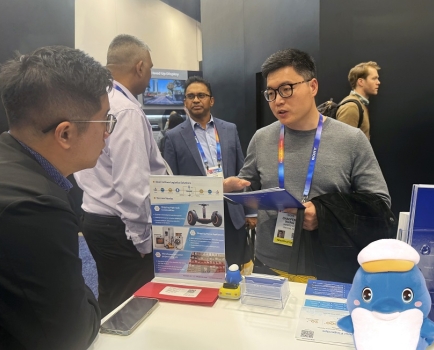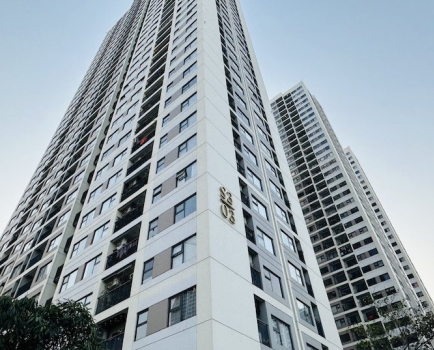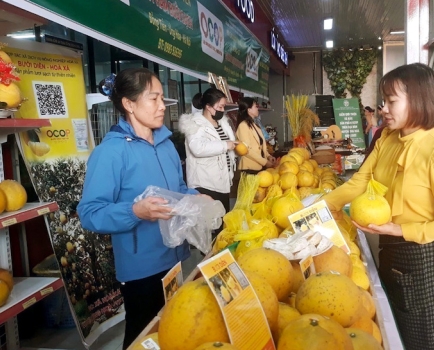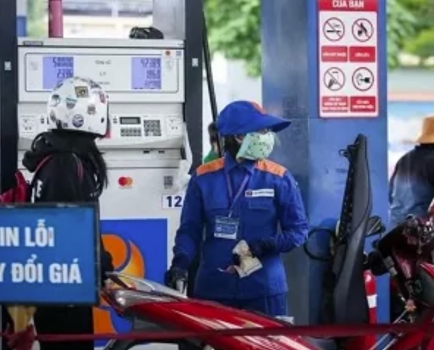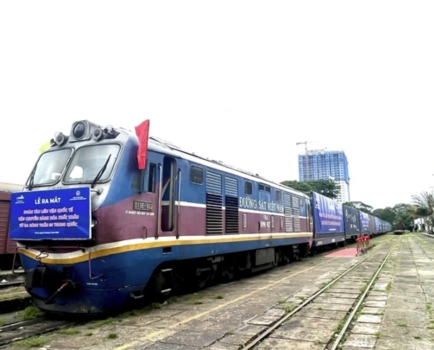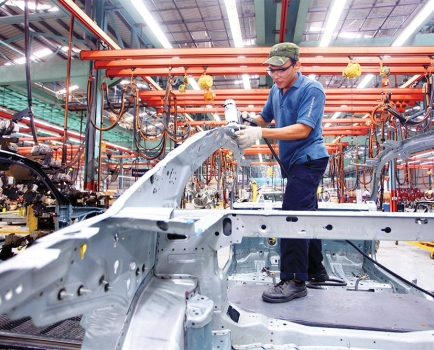Central Vietnam emerges as world’s gateway to ASEAN
Mon, 17 Jun 2019 22:29:00 | Print | Email Share:
Most localities in Central Vietnam have borders with Laos or Cambodia, which is a great opportunity for the region to approach trade with the vast ASEAN community.
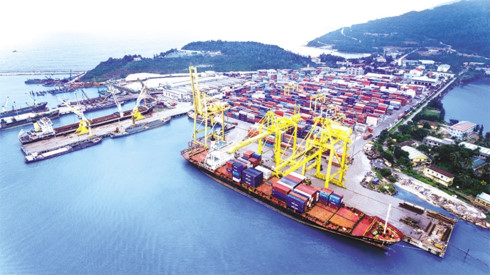
The EWEC and the CLV Development Triangle Area elevate Central Vietnam’s regional
and international economic stature. (Photo: VIR)
According to Minister of Planning and Investment Nguyen Chi Dung, after nearly 20 years of implementation, the co-operation programmes in the framework of the Cambodia-Laos-Vietnam (CLV) Development Triangle have obtained positive results.
“Investment and trade co-operation have been promoted, with major projects having been implemented in the fields of hydropower, mining and mineral processing, planting and processing high-value industrial crops,” Minister Dung said.
Great potential from East-West Economic Corridor
The East-West Economic Corridor (EWEC) has a length of 1,530 kilometres and crosses 19 cities and provinces of the four countries of Myanmar, Thailand, Laos, and Vietnam. In Vietnam, the EWEC starts from Lao Bao International Border Gate in the central province of Quang Tri along Road No.9 to National Highway No.1A in the province’s Dong Ha city, and goes to Thua Thien-Hue, through Hai Van Tunnel to the central city of Danang.
The EWEC project was funded by the Asian Development Bank (ADB), Japan International Cooperation Agency (JICA), and Japan Bank for International Cooperation (JBIC) to further strengthen economic co-operation and trade promotion, investment, and development among the four countries of the corridor, thereby facilitating the comprehensive development of the cities and provinces that are members to it.
In order to serve the EWEC, major projects on transport and infrastructure have been implemented urgently by the Vietnamese government to facilitate commercial transportation.
Three major projects implemented include the project of upgrading Highway No.9 with the total length of 83.5km and the building of an interdisciplinary control station in Lao Bao-Dansavanh area in Laos, with a total of $25 million in loans from the ADB (completed in 2006); the construction of Hai Van Tunnel; and the project of upgrading Tien Sa Port and expanding its capacity to four million tonnes a year and an investment project to build Tien Son Bridge across the Han River to serve container trucks completed in 2004.
In Myanmar, Thailand has supported the upgrading of the road from Mawlamyine Port to the Thai-Myanmarese border. In particular, with the support of Japan, the friendship bridge across the Mekong River connecting Mukdahan town in Thailand and Dansavanh completed at the end of 2006 has connected the entire EWEC route.
Huynh Duc Tho, Chairman of the Danang People’s Committee, said that the EWEC is a convergence of the great potential for development and co-operation among member countries, and is a particularly apt springboard for the development of logistics services in Vietnam.
“Vietnam has two localities, Thua Thien-Hue with Chan May-Lang Co Port and Danang with Tien Sa Port, and adding Lien Chieu Port will create a modern port system to serve as the finishing point of the EWEC and also the doorway between the EWEC route and the East Sea,” Tho said.
Ha Sy Dong, Deputy Chairman of the Quang Tri People’s Committee, said that the EWEC is not only expected to strengthen economic co-operation and trade, investment promotion, and development among the four countries, but is also a testing environment for new economic policies, especially in Myanmar, Laos, and Vietnam. The EWEC’s development strategy will make an important contribution to creating the requisite conditions for comprehensive development for the cities and provinces along the EWEC.
Economists consider Vietnam’s joining of the EWEC a significant turning-point in the development of localities such as Danang, Hue, and Quang Tri. Vietnam, with a stable socio-political situation, fast-paced economic development, abundant natural and human resources, as well as geographical location at the eastern end of the EWEC, is an important import and export market for the goods of Myanmar, Thailand, and Laos.
Vietnam plays a particularly important role in the EWEC, which elevates Central Vietnam’s influence in the development of this international economic corridor.
Most experts share the view that the immediate objective should be to develop a sustainable tourism industry to serve economic development and promote the image of Vietnam to the international arena.
Only in the area along the EWEC’s Vietnam section, three world heritage sites including the ancient capital of Hue, Hoi An, and My Son in Quang Nam province have been recognised by the United Nations Educational, Scientific and Cultural Organization, while there is a plethora of sites scattered around the surrounding areas such as Danang Museum of Cham Sculpture or Phong Nha Ke Bang National Park in Quang Binh province. In addition, there is a wide variety of tourism services available, such as eco-tourism, spiritual tourism, and cultural tourism.
Even during the EWEC1 project, Danang has been laying the foundations to accelerate EWEC2. This idea was expressed by Truong Quang Nghia, Secretary of the Danang Party Committee during the visit to Danang of the First Vice President of the Thai National Legislative Assembly Surachai Liengboonlertchai.
Nghia said that Danang is currently building the EWEC2 from Danang-Dac Oc area in Quang Nam running through Dac Chung district in Laos’ Sekong province and Pakse town in Laos’ Champasak province to Thailand’s Ubon Ratchathani city.
“Here you can connect to the Thai transport system. The EWEC2 will facilitate goods and passenger transport, contributing significantly to the economic, tourism, and cultural development of Vietnam, Laos, and Thailand,” Nghia said. He also asked Liengboonlertchai to promote the EWEC2 in his home country.
CLV Development Triangle Area
The development triangle was formed in 1999 to promote socio-economic development co-operation among 13 provinces of Cambodia, Laos, and Vietnam. They include the provinces of Kon Tum, Gia Lai, Dac Lak, Dac Nong, and Binh Phuoc of Vietnam; Sekong, Attapeu, Saravan, and Champasak of Laos; and Cambodia’s Stung Treng, Ratana Kiri, Mondul Kiri, and Kratie provinces.
In the recent 12th Joint Co-ordination Committee Meeting (JCC) of the CLV Development Triangle Area, Cambodian Minister of Trade Pan Sorasak noted that there are currently 49 projects with the total registered investment capital of $1.64 billion of Vietnamese investment in the Development Triangle Area in Cambodia. “To attract more investors to our countries, on March 31, 2018, Cambodia and Vietnam signed an agreement to avoid double taxation and prevent the evasion of personal income tax. Meanwhile, Cambodia and Laos also exchanged views on this issue,” Minister Sorasak said.
According to Vietnamese Minister Dung, after nearly 20 years of implementation, the co-operation programmes in the framework of the CLV Development Triangle Area have posted positive results. In addition to investment projects in Cambodia, Vietnam has 67 investment projects in the Development Triangle Area of Laos with the registered capital of $1.97 billion.
The CLV ministers recognised the need to speed up the progress of the Tourism Development and Rubber Industry Plan for the CLV Development Triangle Area, and assigned the agencies of the three countries to complete a report before the 11th CLV Summit in Laos in early 2020.
International investors recognise that the CLV Development Triangle Area has opened great opportunities for provinces in the area, especially for the Central Highlands provinces of Vietnam. The large Central Highlands region has abundant development potential, and the Development Triangle Area created a new breakthrough, unlocking potential, as well as opening up international development mechanisms for the provinces.
From the perspective of experts, the CLV Development Triangle Area not only has a positive impact on the Central Highlands of Vietnam, but also opens a great chance for the lowland provinces of the country, including Khanh Hoa, Phu Yen, Binh Dinh, and Quang Nam.
These localities are the east gate of the Central Highlands and will be the gateway for exports to and from the CLV Development Triangle Area. For example, with Chu Lai Open Economic Zone and Truong Hai Auto Corporation’s investment project to upgrade Ky Ha Port, Quang Nam became a big loading port, complementing Chu Lai International Airport, which can receive cargo aircraft of great loading capacity. The province’s being adjacent to the Central Highlands region and sharing a border with Laos provides favourable condition for Quang Nam’s future development.
It can be said that the EWEC and the CLV Development Triangle Area have opened the doors to trade towards the west for Vietnam and its central provinces. This has created a foundation for Vietnam's Central Highlands to develop comprehensively in all aspects through connecting trade with the ASEAN community.
By: VIR/VOV
---------------------------------------------
Same category News :



